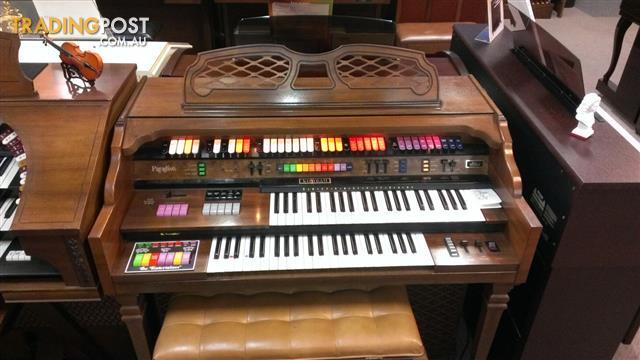

To see the organs, visitors may contact the church offices to make arrangements for a convenient visit.

We hope this catalog will trigger interest in the organs of the Keweenaw from the local folk as well as travelers to this unique place. A loss of any one of the Keweenaw pipe organs is a loss of history, loss of a valuable asset, and, because they are wind instruments similar to the human voice, a loss of the very best way to lead the people of a congregation in their song. Well-maintained pipe organs live for centuries. Their great value requires regular maintenance and care similar to any other major investment such as automobile or home. To replace any one of these pipe organs at this time would cost a minimum of $200,000 and many times more for the larger instruments. They reflect the boom days of the copper mining era when people of wealth who lived in the area sought the best music for their churches and arranged for the purchase of these instruments. These magnificent music machines are a valuable historic resource in the Keweenaw. It is to him that I dedicate this catalog. He read the draft and corrected technical errors. I collected the stoplists, wrote the histories from the collected sources, did all the photography, and formatted the information. I am indebted to him for providing access to the buildings and the instruments and providing much of the history. In his early enthusiasm he became acquainted with all the instruments listed and registered some of them with the Organ Historical Society. Shortly after, I began collecting material for a catalog of the Keweenaw organs.ĭavid Short has been a partner with me in the collection of this material. The second event was an organ crawl to visit the historic organs that David Short had “rediscovered” thirty years earlier. First, the Keweenaw group formed the Organists of the Keweenaw, and since then we have met three or four times a year sharing in presenting programs for each other. In 1995 the Pine Mountain Music Festival (PMMF) for the first time included a pipe organ recital and work-shop in their concert schedule. A bibliography is included at the end of the catalog. Information was gleaned from books about the area, brochures and bulletins from the individual churches, clippings from Upper Peninsula newspapers, and people-the local organists and pastors and local historic preservationist, Ed Yarbrough. Included are a brief description and history of each church structure and a description, stoplist, and photos for each pipe organ featured. It is the intent of this article to do that. What have not been documented are the historic pipe organs in the area. In the Keweenaw, many artifacts, buildings, and locations have been documented and preserved for local historical museums and the Keweenaw National Historic Park. Navy to run the Keweenaw Rocket launch site. From 1964–1971, the University of Michigan cooperated with NASA and the U.S. The Keweenaw’s importance in mining led to the founding of the Michigan College of Mines (now Michigan Technological University) in Houghton in 1885. The northern end, referred to locally as Copper Island, is separated from the rest of the peninsula by the Keweenaw Waterway, a natural river that was dredged and expanded in the 1860s across the peninsula between the cities of Houghton on the south side and Hancock on the north.

Its major industries are now logging and tourism. The land was mined by prehistoric miners, starting in 3,000 B.C., and has produced over 1.5 billion pounds of pure copper. The Keweenaw Peninsula, the northernmost part of Michigan’s Upper Peninsula, projects into Lake Superior and was the site of the first copper boom in the United States.


 0 kommentar(er)
0 kommentar(er)
